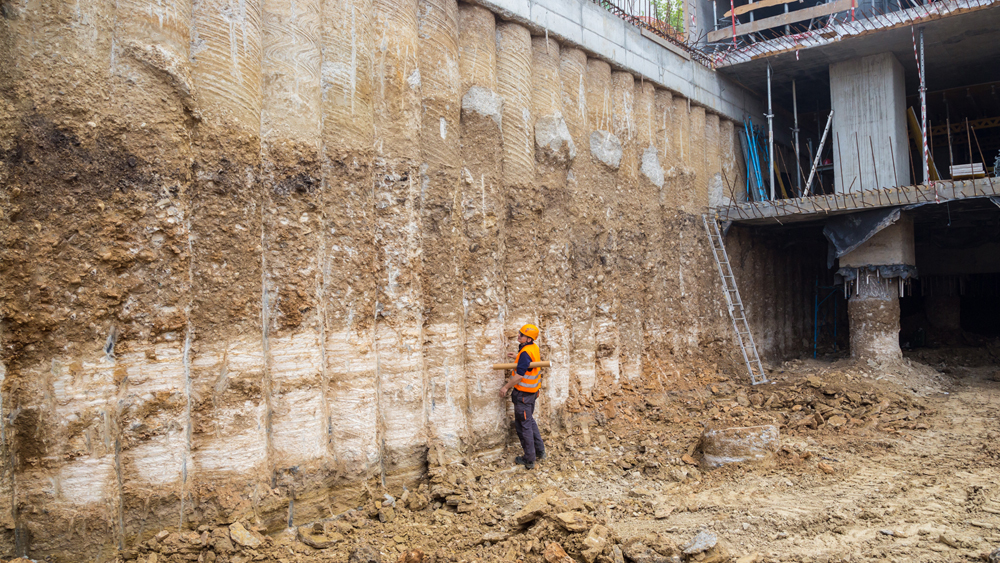Consulting Civil Engineering Companies Providing Geotechnical Solutions
Consulting Civil Engineering Companies Providing Geotechnical Solutions
Blog Article
How Consulting Engineers Enhance Geotechnical Engineering Projects: Insights Into Their Knowledge, Approaches, and Collaborative Approaches
Consulting engineers are essential in improving geotechnical design tasks, applying their specialized knowledge to browse the intricacies of subsurface conditions. Their techniques encompass a variety of site examination strategies, including Criterion Infiltration Examinations (SPT) and Cone Infiltration Examinations (CPT), which educate important decisions throughout the style and construction stages. Their collective approaches foster communication among varied project stakeholders, ultimately forming the job's trajectory. As we take a look at the diverse duties these specialists play, it ends up being clear that their contributions prolong past technological experience, prompting a closer consider the effects for job success.
Function of Consulting Engineers
The proficiency of speaking with engineers in geotechnical design is fundamental to the effective execution of building tasks. These professionals play a crucial function in evaluating dirt and rock residential properties, which are important elements affecting layout and building choices. By carrying out comprehensive website investigations, seeking advice from designers gather essential information that educates the layout procedure, making sure tasks are improved steady and appropriate ground.
Consulting engineers also offer vital understandings right into danger monitoring (geotechnical geologist). They recognize possible geotechnical risks, such as landslides, dirt liquefaction, and negotiation problems, enabling stakeholders to execute effective reduction approaches. Their knowledge aids in optimizing structure layouts, which can lead to considerable expense financial savings and improved security
Furthermore, consulting engineers act as a crucial web link in between task owners, engineers, and service providers. Their ability to translate complicated geotechnical information right into actionable suggestions promotes partnership and promotes informed decision-making throughout the job lifecycle. This multidisciplinary method not just boosts job effectiveness but additionally makes certain conformity with governing criteria and ideal methods.
Secret Techniques in Geotechnical Design

One main technique is website examination, which includes conducting area examinations and research laboratory analyses to gather information on subsurface conditions. Techniques such as Criterion Infiltration Testing (SPT) and Cone Penetration Testing (CPT) are extensively made use of to review dirt stratigraphy and strength. Furthermore, geophysical approaches, consisting of seismic and electric resistivity surveys, give non-invasive means to examine subsurface attributes.
Another crucial technique is mathematical modeling, which makes it possible for engineers to imitate different circumstances and forecast exactly how soil-structure communications will certainly behave under different loading conditions. Limited Element Analysis (FEA) is a typical technique utilized in this context.
In addition, the layout of structures, maintaining frameworks, and earthworks depends greatly on these techniques - geotechnical geologist. By incorporating advanced analytical tools with area information, consulting designers can establish tailored remedies that resolve certain job difficulties, ultimately contributing to the security and security of building and construction jobs
Value of Soil Evaluation
Soil evaluation acts as a fundamental component in geotechnical design, giving necessary understandings into the physical and chemical residential properties of dirt necessary for reliable building planning. Recognizing soil features is critical for identifying its load-bearing ability, drainage behavior, and capacity for negotiation or instability. Thorough soil examinations, including tasting and lab testing, aid recognize parameters such as dirt kind, wetness material, thickness, and shear toughness.
These analyses notify the choice of ideal construction methods and products, ultimately affecting project safety and security and long life. For example, natural soils may call for various foundation layouts contrasted to granular soils, demanding customized engineering services. Soil evaluation aids in identifying contaminants that could position risks to human health or the setting, permitting for the development of reduction approaches.
Integrating dirt analysis into the early phases of task development aids to reduce unpredicted challenges, ensuring that engineers can prepare for and address possible problems prior to they escalate. By establishing a detailed understanding of the site conditions, consulting engineers can maximize design performance and reduce expenses, consequently boosting the total success of geotechnical design tasks.
Collaborative Strategies in Jobs
Effective geotechnical tasks commonly depend upon collaborative strategies that bring together diverse competence from different self-controls. Reliable partnership amongst getting in touch with engineers, rock hounds, ecological scientists, and building specialists is critical for attending to intricate challenges and optimizing project results. By leveraging the special skills and visit site knowledge of each employee, jobs can profit from an all natural understanding of the site conditions, governing demands, and design constraints.
Normal communication and interdisciplinary conferences facilitate the sharing of understandings and promote a culture of team effort. These collaborative initiatives enable the identification of possible dangers early in the task lifecycle, enabling prompt mitigation strategies. Integrating responses from stakeholders, consisting of neighborhood areas and governing firms, guarantees that all point of views are thought about, enhancing job acceptance and compliance.
In addition, the integration of advanced technologies, such as Geographic Information Equipment (GIS) and Structure Details Modeling (BIM), further boosts collaboration. These devices permit the real-time sharing of information and visualization of geotechnical conditions, advertising informed decision-making. Ultimately, a collective technique not only improves task implementation but likewise lays the structure for innovative options to complicated geotechnical engineering difficulties.
Effect On Project Outcomes

Consulting designers use advanced methods such as risk evaluation and predictive modeling, which boost the precision of job forecasts. Their ability to integrate innovative innovations, like geotechnical instrumentation and data analytics, additionally refines the layout and construction procedures. As a result, projects experience boosted efficiency, lowered costs, and reduced delays.
Additionally, fostering reliable communication and cooperation among staff member improves analytical capacities. When challenges occur, a joined front enables quick identification of options, protecting against potential setbacks. Ultimately, the joint efforts of seeking advice from engineers contribute to higher high quality results, guaranteeing that jobs fulfill both regulative standards and client expectations.
Final Thought

Report this page